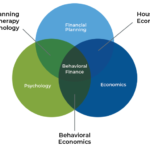When the Financial Planning Association recently announced its OneFPA Network initiative to consolidate its chapters, a key aspect was to gain operational efficiencies and leverage the FPA’s economies of scale by fully centralizing the accounting of all 86 of its chapters. The systems overhaul would require a substantial initial investment – estimated at more than $300,000 – but with the end result of all chapters being relieved of the burden of chapter accounting and instead simply receiving monthly financial reports directly from National.
Yet part of the controversy of the OneFPA Network initiative is that FPA has been experiencing its own deterioration of financials over the past decade, with revenue down by millions of dollars since the financial crisis impacted the financial advisor community, raising questions of whether the FPA is simply trying to consolidate its chapters finances so it can get access to available chapter cash reserves and annual surpluses.
To rebut concerns about FPA’s financial state of affairs, the organization conducted in late January a first-ever “Overview of National Finances” to its chapter leaders, which did candidly acknowledge that the organization’s revenue has dropped by nearly $4M from a decade ago, but noting that membership revenue is actually up over that time period, and emphasizing that FPA’s finances have stabilized since the downturn. Except, as it turns out, the historical trends that the FPA presented didn’t even match its own published Audited Financials, to the tune of nearly $1.5M revenue per year for several years, and a cumulative mismatch of nearly $8M of 'missing' revenue over the past decade.
In addition, it’s notable that since 2015, the FPA stopped distributing its Audited Financials to members altogether – ironically a self-violation of the FPA’s own “Information and Transparency Policy” – and only began distributing a more limited financial summary in its Annual Report. Which itself was excluded from its just-released 2018 Annual Report, leaving FPA’s own membership entirely in the dark about its current financial state (except, again, for a recent webinar that reported numbers failing to match FPA’s already-published Audited Financials to the tune of $8M of missing revenue). Even as the webinar did concerningly highlight a substantial $700k drawdown in FPA’s available cash over the past year, which appears to be attributable primarily to a significant decrease in the FPA’s deferred revenue… a potential signal that its actual revenue is about to deteriorate further.
Fortunately, the reality is that the FPA does have a demonstrated track record of managing its expenses (i.e., cutting staff and costs) in-line with its revenue, and as a result, its available reserves have remained stable throughout its financial turmoil of the past decade. Which suggests that the FPA may not literally be in any kind of “financial distress,” but simply that the organization’s revenue is declining more substantially than it has previously implied… which should be a concern for a National Board that, thus far, has not held its staff leadership accountable for the decline.
More broadly, though, the key question is simply this: how can the FPA move forward with the OneFPA Network and confidently and transparently account for its chapters – which is at best an extremely time- and labor-intensive tasks when committed to monthly reconciled reporting – when the National organization can’t even effectively (and transparently) account for itself?






 Welcome back to the 115th episode of Financial Advisor Success Podcast!
Welcome back to the 115th episode of Financial Advisor Success Podcast!



